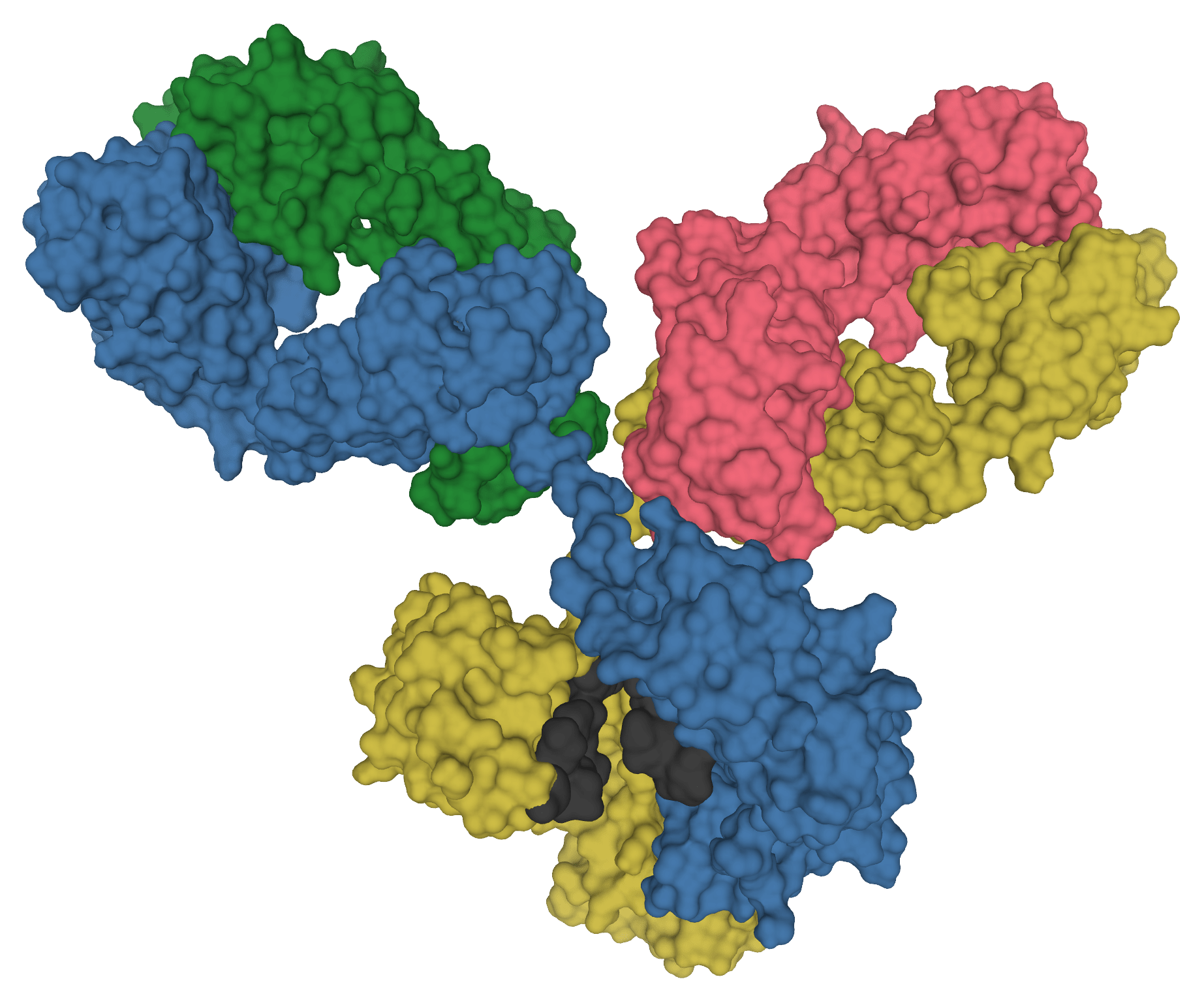- UK PM Starmer to hail trade and tech ties in Modi meeting Reuters
- UK won’t relax visa rules for India, Starmer says BBC
- British PM Keir Starmer in India after July trade deal Dawn
- UK won’t give more visas to Indian workers, says PM Sky News
- BMC…
Blog
-
UK PM Starmer to hail trade and tech ties in Modi meeting – Reuters
-

Schools in Wales ‘excited but wary’ as teacher workloads cut
Bethan LewisWales family and education correspondent
 BBC
BBCRyan Cresswell, a teacher at Birchgrove Comprehensive School in Swansea, says they are “very positive” about using AI while teaching pupils how to use it responsibly AI can substantially cut teacher workloads and help pupils learn but schools need clearer guidance on how to use it “safely and ethically”, the education watchdog has said.
Estyn’s report on artificial intelligence says some teachers are using it to plan lessons and to draft letters to parents and pupil reports.
However, teachers also reported concerns that AI could negatively affect pupils’ skills while some were worried about plagiarism and inappropriate use of the technology.
The Welsh government said it was important to balance the effective use of AI with the safety and wellbeing of pupils and staff.
‘Promote curiosity’
At Birchgrove Comprehensive School in Swansea, they teach pupils how to use AI as part of ICT (Information and Communication Technology) lessons and staff across the school are encouraged to become more AI-literate, while it can be used by pupils to help them research a subject.
“If we see a pupil using it, we encourage them to use it but we encourage them to use it responsibly and that really does have a positive impact,” says Ryan Cresswell, the school’s digital and innovation lead.
“Our approach is to be very positive about it, because our feeling is, if the pupils are going to be using it, we’d rather teach them how to use it responsibly than just ignore it”.
He said there were “absolutely valid concerns” about pupils using it, is “as a crutch as opposed to a learning tool.
“The big concerns that we have from staff are obviously that they say ‘how do we know that they haven’t submitted this work using AI?’
“The simple answer to that is we know our pupils, we know the work that they’re capable of because we see them day in and day out”.
He said the aim was to use AI to “accelerate” learning and “promote curiosity”.

‘When you use it in the correct way it can help you’
The Estyn report found that secondary school pupils were using AI for tasks such as summarising revision notes and creating quiz questions tailored to exam content.
But it found that there were big variations in how much pupils used it.
Some were “more fearful, concerned about what use is permissible and worried that teachers will accuse them of cheating if they do use it”.
Thirteen-year-old pupils at Birchgrove Comprehensive said they used it for revision and to go over what they had learnt in a lesson.
“I think it’s useful. Teachers can find out if we’re cheating or not but when you use it in the correct way it can help you”, said Grace.
Maya said: “If I’m curious about something in the house I might ask AI and they will answer me.
“If I don’t get anything in class, I’ll search it up and ask it to break it down for me”, Emilia said.
“I double check it on lots of other websites to make sure it’s definitely the right answer.”
Overall Estyn found most schools they visited were “in the early stages of exploring the benefits of AI, with pockets of experimentation led by digitally confident and curious staff”.
But in most cases, “AI adoption was ad hoc and usage varied considerably between individuals, phases of learning and departments.”
It said many staff “were excited by the potential of AI but wary of its use” adding that they “generally expressed caution about AI’s potential issues, such as accuracy, bias, and safeguarding risks”.
The report said using AI to draft letters and reports had helped some schools by “substantially reducing administrative workloads” freeing up staff to focus more on pupils.
Teachers also told Estyn that AI could be effective for tailoring resources to individual pupils, particularly those with additional needs.
What is AI?
- It can create new content – which can seem like it has been made by humans
- It can do this by learning from vast quantities of data, such as online words and images
- GenAI or generative AI is artificial intelligence that can create new content such as text, images, videos, and music.
What are teachers using AI for?
- Tailor learning for pupils with special needs
- Lesson planning, report writing – so saving time and cutting workload
- Generating tasks or texts to meet the needs of all pupils
- Simplify texts to make them more accessible to pupils
- Summarise meeting notes, reports and planning docs
Andrew Owen, headteacher of Birchgrove Comprehensive said some pupils found it difficult to process information.
“They struggle with the amount of information that they’re asked to use in their education and I think an AI tool allowing pupils to summarise articles and to actually sift the information that’s really important can be a real asset to their learning”.
Mr Owen said he was initially wary of AI.
“I felt apprehensive. I didn’t have the skills to actually understand it fully.”
He said they had decided to “embrace it” to help with school administrative tasks as well as in teaching and learning.
“It has many risks if misused and I think from an educational perspective the use of AI has moved on very quickly and we owe to the pupils in Birchgrove to try and educate them about the acceptable use of AI”.
He said more guidance would be welcome, as everyone was struggling to catch up.
The Welsh government said it accepted Estyn’s recommendations including more training for staff and national guidance on implementing AI in education.
“It is essential to balance the effective use of gen AI, while prioritising the safety and well-being of our learners and workforce.”
Continue Reading
-

Transient rapamycin treatment enables long-term delivery of anti-HIV antibodies
The fight against HIV has seen remarkable advances, particularly with the development of broadly neutralizing antibodies (bnAbs) that can target diverse strains of the virus. However, delivering these antibodies efficiently and sustainably…
Continue Reading
-

Just 3 Drinks Per Week May Raise Dementia Risk
- There is a lot of confusing and conflicting information regarding alcohol and health.
- This study suggests that any amount of regular alcohol use increases the risk of dementia.
- If you feel you can’t cope without alcohol, seek help from a…
Continue Reading
-

Dolly Parton says ‘I ain’t dead yet’ after health fears triggered by singer’s sister | Ents & Arts News
Dolly Parton has declared she “ain’t dead yet” after her sister raised concerns about the singer’s health by asking people to pray for her.
“There are just a lot of rumours flying around. But I figured if you heard it from me, you’d…
Continue Reading
-

The best Prime Day SSD deals still available on Day 2: Save on Samsung, microSD cards for Switch 2 and more – Engadget
- The best Prime Day SSD deals still available on Day 2: Save on Samsung, microSD cards for Switch 2 and more Engadget
- Thanks to a massive $128 discount, this 4 TB drive is the best Prime Day SSD deal I’ve seen so far PC Gamer
- Samsung’s 2TB 990 Pro…
Continue Reading
-
Navigating National Security Risks in AI-Related Investments – FTI Consulting
- Navigating National Security Risks in AI-Related Investments FTI Consulting
- A recap of the Trump Administration’s approach to regulating artificial intelligence A&O Shearman
- White House AI Action Plan Addresses Ethical and Regulatory Challenges in Pharmaceutical Integration geneonline.com
- White House AI Action Plan: What Healthcare Leaders Must Do Now MedCity News
- A look at the White House’s pro-innovation artificial intelligence ‘action plan’ Reason Foundation
Continue Reading
-

Speech by Governor Barr on community development and Indian Country
Good afternoon. Thank you for the invitation to be here to help mark the 10th anniversary of the Center for Indian Country Development (CICD) and to further the goal of advancing development through better data.1 It’s a privilege to be in the presence of so many tribal leaders, Federal Reserve colleagues, policymakers, researchers, and practitioners all working to advance Native economies. My experiences traveling with CICD and engaging in CICD’s work have been a meaningful part of my time at the Federal Reserve.
At the Board of Governors, I serve as the oversight governor for our Division of Consumer and Community Affairs, which supports the community development function across the Federal Reserve System. It’s a role that means a great deal to me. Community development has been a cornerstone of my career—as a governor, banking regulator, and earlier in my career as a scholar, university leader, and the Treasury Department’s point person on community development in the 1990s.
I’d like to focus my remarks today on why I think the work you all are doing is critical to the prosperity of Native nations and Indigenous communities, and why that success matters for our country.
Two years ago, I traveled to western Montana with CICD staff. We visited the Blackfeet Indian Reservation, which is home to the Blackfeet Nation, and the Flathead Indian Reservation, which is home to the Confederated Salish and Kootenai Tribes.
On our visit, I saw examples of tribal leaders diversifying their economies through tribally owned enterprises—and then leveraging revenues from those enterprises to reinvest in their communities. I heard from business leaders struggling with supply chain challenges and community members pulling together to address housing supply and affordability issues.2 At a community roundtable, financial leaders talked about credit needs in their regions including challenges with limited credit and access to financial services and distance from banks.
These issues take center stage in CICD’s research. And in our conversations, research served as a springboard for a variety of community members and leaders to come together to explore solutions. This is why community engagement is a critical part of community development, and a huge value add for the Federal Reserve as we seek to understand how people are experiencing the economy.
I see this same spirit of working together on behalf of a better future—grounded in research—on display here today.
Economic Gaps and Data Needs in Indian Country
There remain persistent economic gaps in Indian Country based on many metrics. Native Americans have lower household income, and poverty is a significant problem on reservations.3 According to the Federal Reserve’s Survey of Household Economics and Decisionmaking (SHED Survey), Native American households consistently report a lower likelihood of having the cash to pay for a $400 emergency expense, which is a common measure of financial security.4 Looking at the labor force, unemployment is higher for Native American workers than for workers overall. Research has also documented a lack of financial institutions near reservations, which restricts capital and credit availability. A recent study showed that Native-owned small businesses were less likely to receive the financing they applied for, even though they were much more likely to apply for small amounts of credit.5 Native Americans also face a higher cost of homeownership.Economic downturns can exacerbate gaps, such as when social-distancing measures during the COVID-19 pandemic disproportionately harmed sectors such as gaming and entertainment in which many tribally owned businesses are concentrated.
Addressing these persistent challenges requires coordination with local leaders to achieve progress. During my first stint at the Treasury in the 1990s, I co-chaired a working group whose objective was to reduce barriers to mortgage lenders and expand access to credit in Indian Country, with pilot programs in the Navajo Nation and Oglala Sioux Pine Ridge Reservation. The working group helped map out a clearer process for residents to obtain mortgages by coordinating tribal governmental, federal, and lender roles.6 I see this as an example of potential progress that can be made when national and local leaders and the private sector leverage research and come together to find solutions, but also as a reminder that these are long-standing problems that are still with us today.
In other ways, tribal governments have been proactive in diversifying their revenue streams and innovating in their use of economic data to make evidence-based decisions. Native Community Development Financial Institutions (CDFIs) are addressing credit gaps in their communities with culturally informed lending practices and financial services. There are many examples of initiatives targeting specific economic challenges. We see signs of progress, including positive trends in Native American employment and household income. But we’ll only know whether we’re making economic gains in Indian Country over time if we have timely, high-quality data disaggregated for Native peoples and geographies. Data dashboards are not just for researchers. They help tribal nations and decisionmakers in many capacities make informed decisions about how to allocate resources, design interventions, and monitor economic growth.
We know that Indian Country has sometimes been referred to as the “asterisk nation” as a result of insufficient sample sizes of Native Americans in national datasets. Experiences in which external researchers used data in ways that were harmful to tribal communities have also contributed to mistrust of research and data in Indian Country. At the same time, many tribal governments have limited resources to allocate toward their own data collection.
Research and Data Advancements
Research and data advancements in Indian Country are changing this narrative. Over the past decade, CICD’s research has advanced our understanding of the pillars of tribal economies and potential interventions.7 We’ve learned more about the role of tribal governments and tribal enterprises in local and regional economies, and the ways tribal treasuries are distinctive from those of local and state governments. CICD’s research has helped us understand how infrastructure gaps such as broadband access can impede economic growth and leave communities more vulnerable to economic shocks. And it’s provided research insights on strategies for increasing access to capital and credit in Native communities.Much of this research has taken place in collaboration with Native organizations, tribal governments, and economic development practitioners. In some of these areas, such as research on the practices and outcomes of Native CDFIs, CICD and its collaborators have provided some of the first systematic quantitative analysis in the field.
CICD has also developed a suite of data tools that empower community members and decisionmakers to explore economic conditions at local to national levels and monitor trends over time.
Indian Country’s Relevance to the Broader Economy
This work to advance economic research and data in Indian Country matters to the overall economy. The Federal Reserve promotes a healthy economy and a stable financial system for everyone, and that simply cannot be done without supporting strong and sustainable communities in Indian Country. Research tells us that Native economies are closely intertwined with local and regional economies. Examples include tribal casinos attracting visitors to surrounding businesses and Native enterprises subcontracting with non-Native-owned businesses.CICD’s mission supports the Federal Reserve’s community development function, which works to promote access to credit, investment, and financial services in low- and moderate-income communities, and foster a better understanding of their economic conditions. This happens in a few ways.
As members of the Federal Open Market Committee, my colleagues and I decide on the appropriate setting for monetary policy. In this role, it’s vital that we understand how a variety of individuals, institutions, and communities experience the economy. Research from CICD and community development teams here in Minneapolis and across the Federal Reserve System sheds light on economic circumstances in our communities.
As important as it is, monetary policy isn’t the main thing that matters to a healthy economy. Businesses, financial practitioners, nonprofits, community leaders, and decisionmakers at many levels all need research and data to make evidence-based decisions and promote thriving and economically resilient communities. The community development function provides this research and convening power to advance our collective understanding of local financial needs.
Our community development work also provides timely, on-the-ground insights on developments in the financial system. A prime example of this is the series of surveys CICD conducted during the COVID-19 pandemic. These surveys provided real-time glimpses of the challenges that tribal governments, businesses, and community leaders were facing as a result of the pandemic.
In addition, under the Community Reinvestment Act, the Federal Reserve has a statutory obligation to supervise how banks meet the credit needs of the communities they serve, consistent with safe and sound lending practices. And that very much includes communities in Indian Country. And we need good data and analysis to fulfill our statutory obligations.
What it comes down to is that the Federal Reserve does our best work when we understand what’s happening in communities, and that includes the rich variety of communities across Indian Country.
Learning from Indian Country
As we look to the future, decisionmakers inside and outside of Indian Country can learn from the ways tribal governments have served their communities and guided their economies through many challenges. In my visits with tribal leaders, I have been inspired by their long-range vision—considering how decisions today will affect their ability to care for their communities for generations into the future.I’ve also come to appreciate their grit and creativity in meeting community needs, whether it be through starting a tribal bank to meet local financial service needs, leveraging tribal enterprises to create employment opportunities, or innovating in their use of economic data to tailor public services to their communities.
Much has been said about the economic challenges in Indian Country, but perhaps what has impressed me the most in my visits is the sense of optimism for the future from so many people I have met, despite these challenges.
Thank you for the important ways you are coming together to use research and data to propel your communities forward. It’s an honor to be here with you.
1. The views expressed here are my own and are not necessarily those of my colleagues on the Federal Reserve Board or the Federal Open Market Committee. Return to text
2. See the Federal Reserve of Minneapolis website at https://www.minneapolisfed.org/speeches/2021/us-senate-testimony-housing-for-native-americans-review-of-federal-programs-barriers-and-opportunities and https://www.minneapolisfed.org/article/2024/native-americans-pay-more-to-finance-home-purchases-than-white-borrowers. Return to text
3. Federal Reserve Bank of Minneapolis, Native Community Data Profiles. Return to text
4. Board of Governors of the Federal Reserve System, Economic Well-Being of U.S. Households in 2024 (Washington: Board of Governors, May 2025). Return to text
5. See the Federal Reserve of Minneapolis website at https://www.minneapolisfed.org/article/2024/native-entrepreneurs-face-credit-access-challenges. Return to text
6. U.S. Department of Housing and Urban Development and U.S. Department of the Treasury, One-Stop Mortgage Center Initiative in Indian Country: A Report to the President (PDF) (Washington, DC: HUD, 1999). Return to text
7. Casey Lozar, Caryn Mohr, and Ryan Nunn, “Insights from a Decade of Economic Research in Indian Country,” article (Federal Reserve Bank of Minneapolis: April 3, 2025). Return to text
Continue Reading
-
London Film Festival launches with Daniel Craig's third 'Knives Out' movie – Reuters
- London Film Festival launches with Daniel Craig’s third ‘Knives Out’ movie Reuters
- ‘Knives Out’ Creator Rian Johnson Opens London Film Festival in Spooky Style With ‘Wake Up Dead Man’ — His “Most Personal” Murder Mystery Yet The…
Continue Reading
-

FOH Engineer Is Flying High With Polyphia—and His Console
Carry-on Allen & Heath SQ-5 and stagebox bring consistency to guitar-rock tour, with flexibility as the venues get bigger.
FOH engineer Keith Loboda at the Allen & Heath SQ-5 console. Bloomfield, Conn.—When Keith…
Continue Reading
